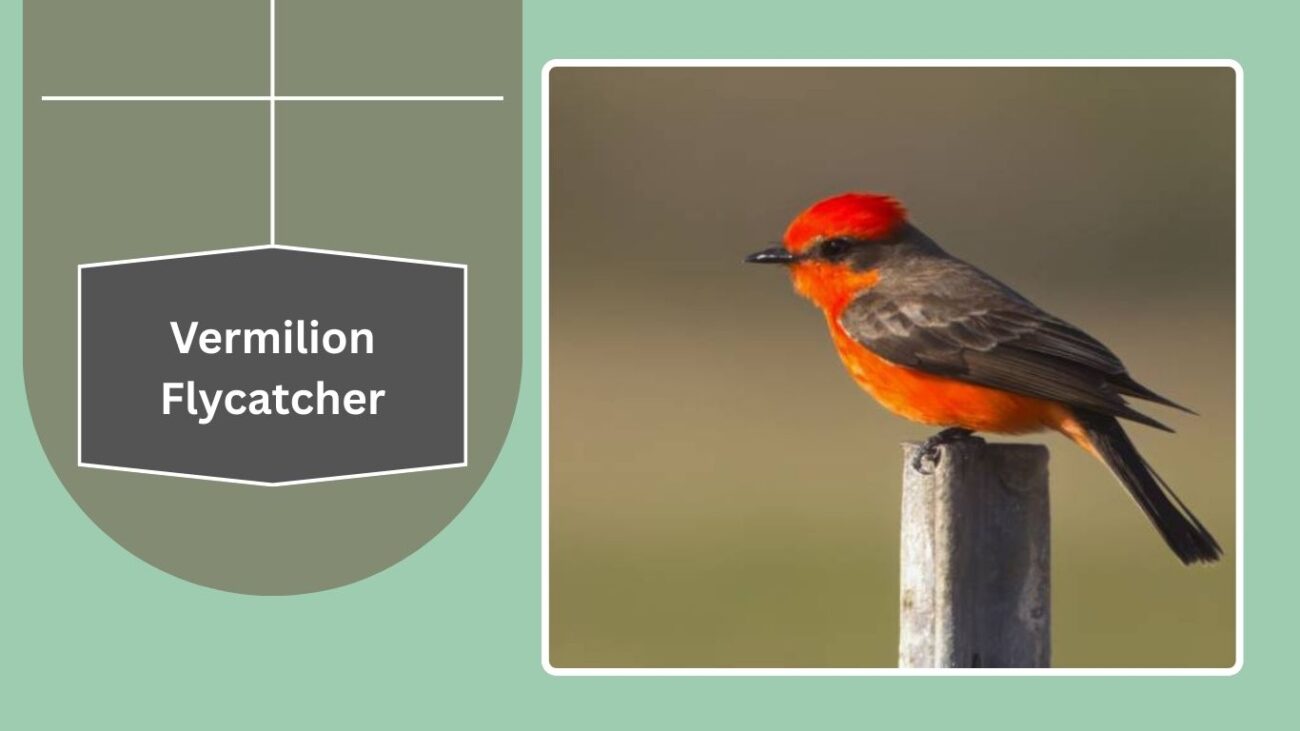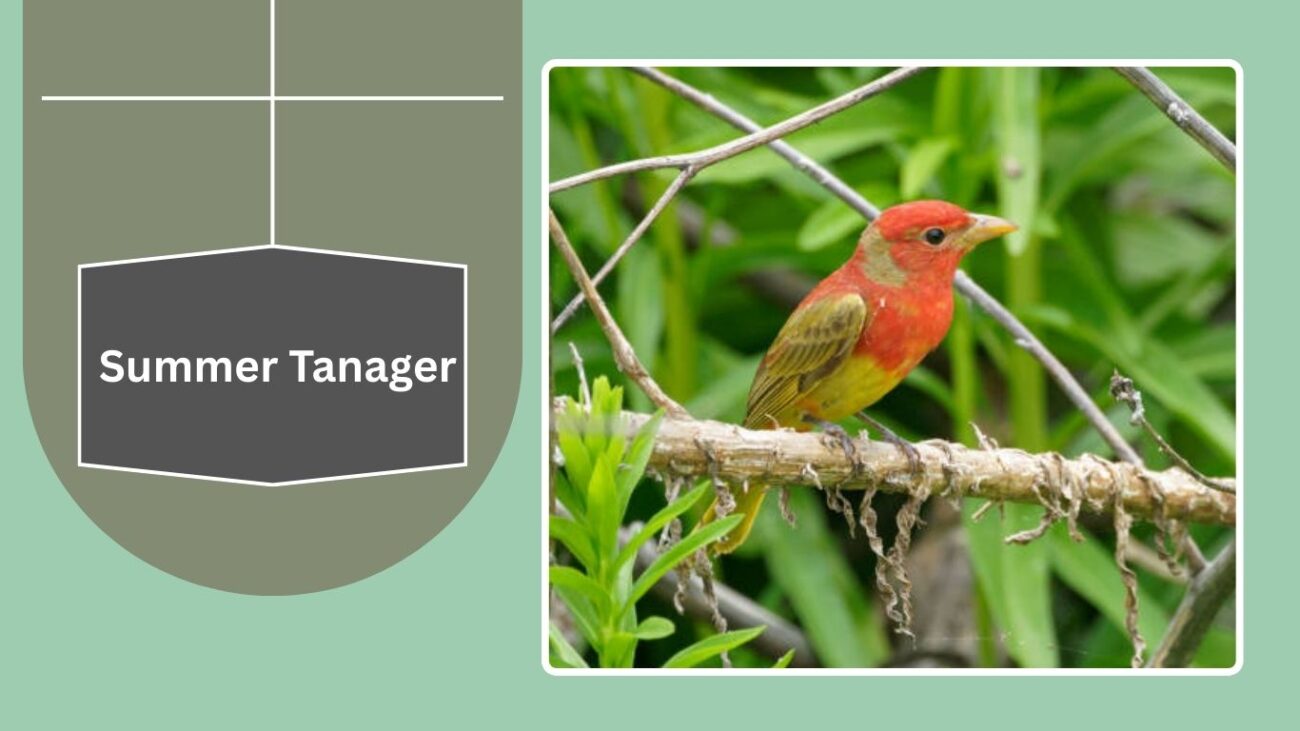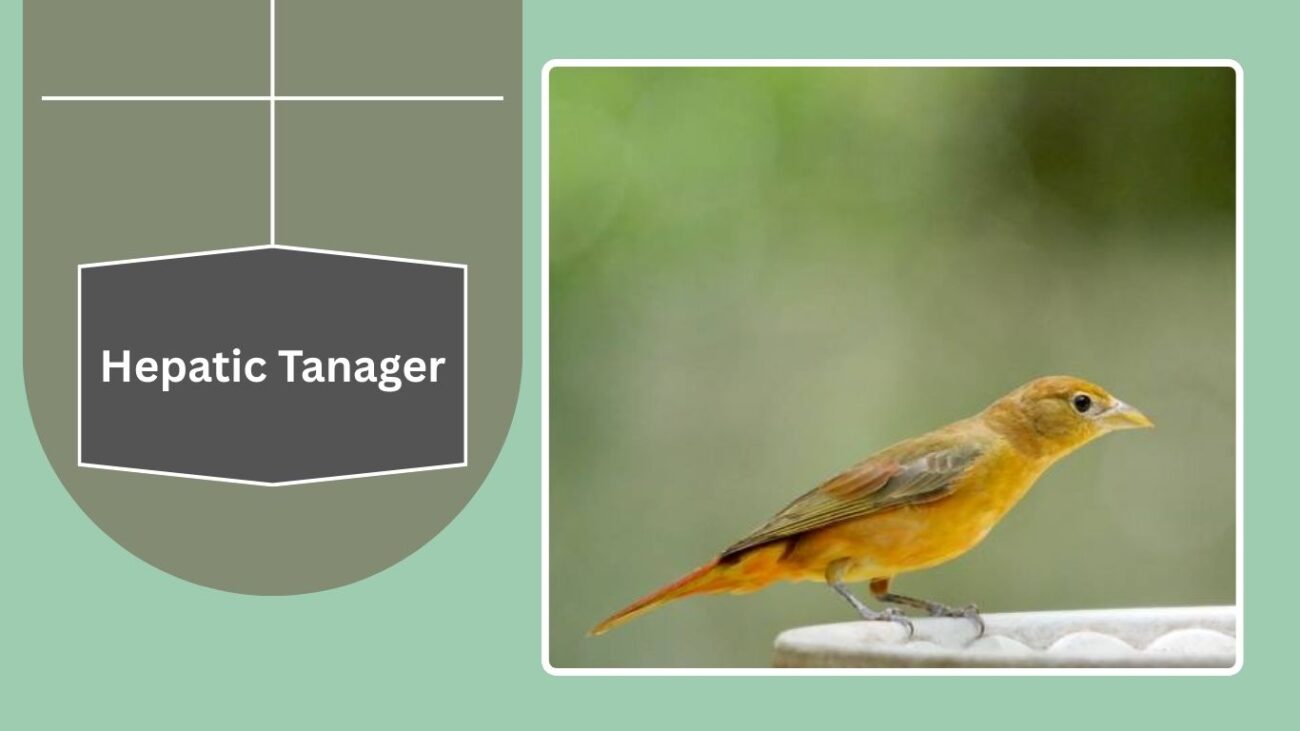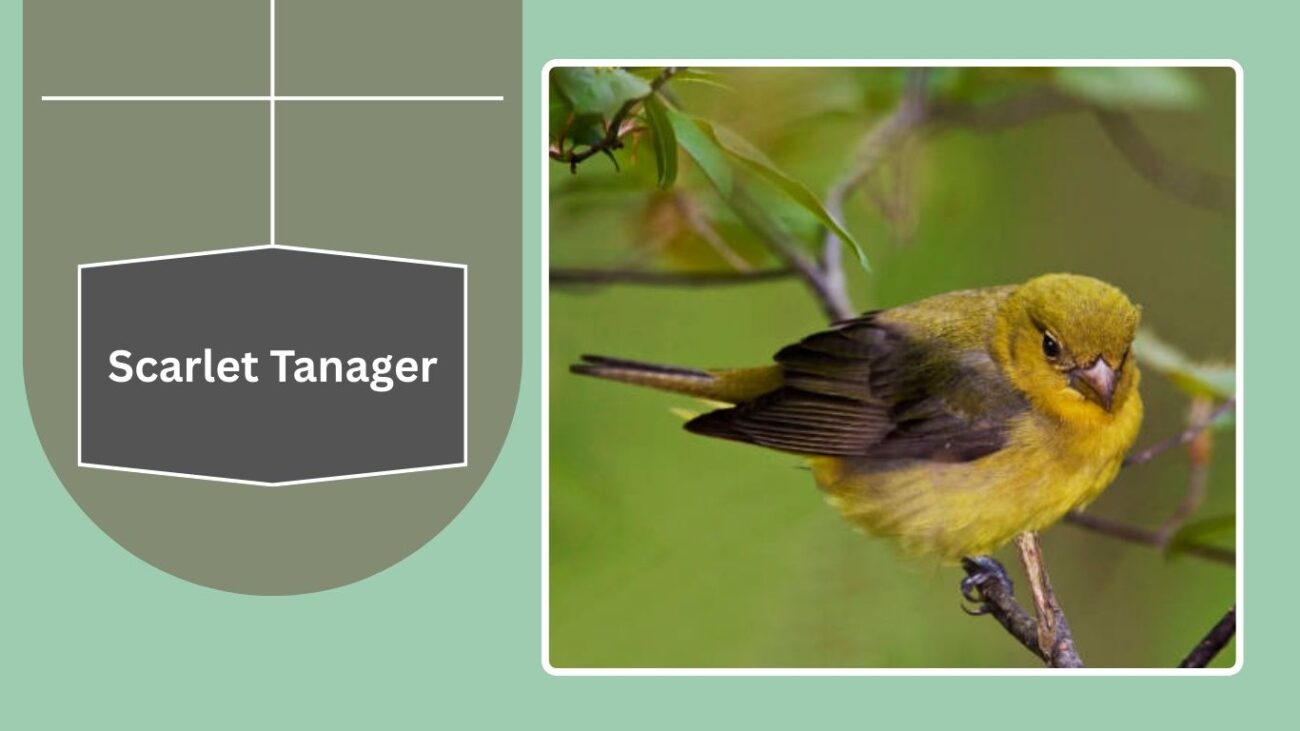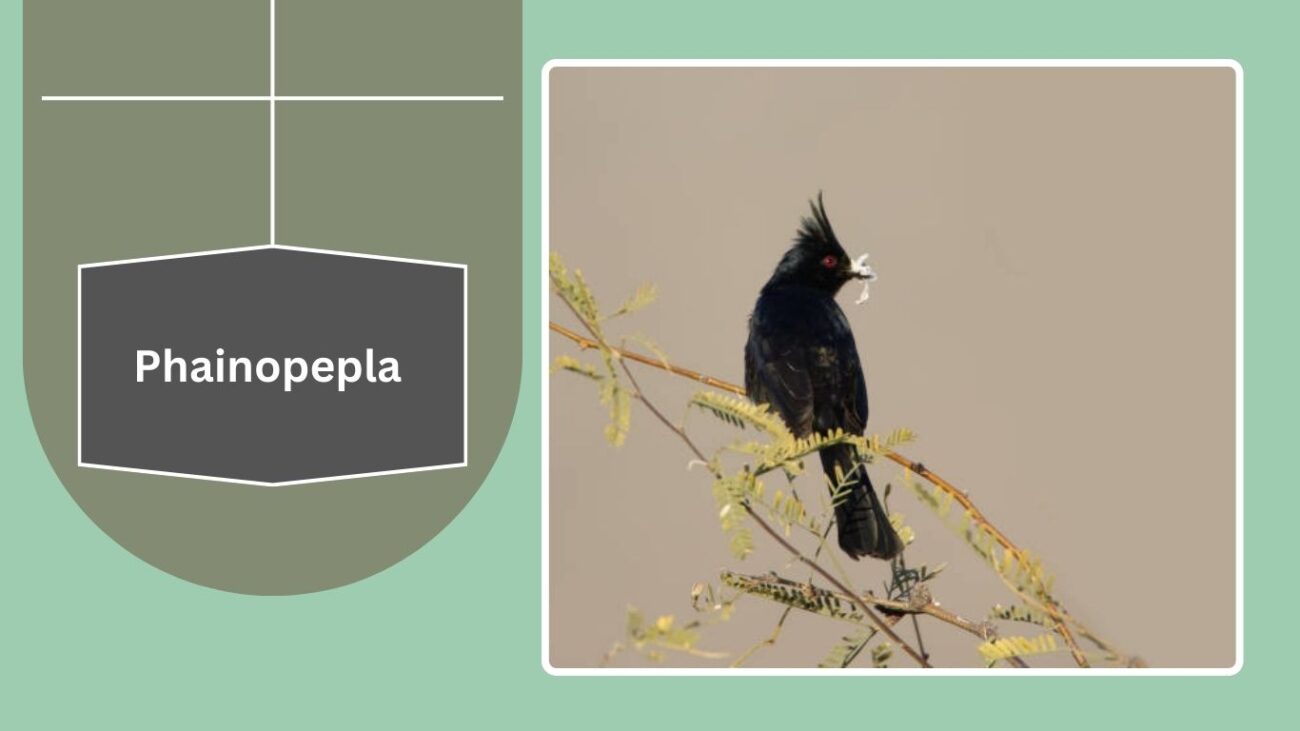Female Northern Cardinals are often admired for their soft, earthy beauty, but they can be tricky to tell apart from other bird species with similar colors and shapes. Many tanagers, grosbeaks, and finches share the same muted brown and yellowish tones, making quick identification difficult. In this guide, we’ll explore 12 birds that look like female cardinals, with details to help you spot the differences more easily.
1. Pyrrhuloxia
The Pyrrhuloxia (Cardinalis sinuatus) is often called the “desert cardinal” and is the bird most commonly mistaken for a female Northern Cardinal. Found mainly in the arid regions of the southwestern United States and northern Mexico, it closely resembles the female cardinal in both size and coloring.
Identification
- Medium-sized bird, about 8–9 inches long
- Grayish-brown body with reddish highlights on wings, crest, and tail
- Distinctive short, yellow, parrot-like bill
- Prominent crest similar to cardinals
- Males are more vibrant with extensive red, while females resemble cardinals more closely
Behavior
Pyrrhuloxias are social birds often seen in small flocks, especially in winter. They forage on the ground for seeds, fruits, and insects. Males sing melodious whistles, similar to cardinals, but with softer, more varied notes.
Habitat
They inhabit desert scrub, mesquite thickets, and arid woodlands, particularly in Arizona, New Mexico, Texas, and northern Mexico. Their preference for dry regions sets them apart from Northern Cardinals.
Importance
This bird plays a role in dispersing seeds of desert plants and controlling insect populations. Its resemblance to female cardinals often makes it a favorite among birdwatchers seeking to distinguish between the two species.
2. Vermilion Flycatcher (Female)
The female Vermilion Flycatcher (Pyrocephalus rubinus) is another bird often confused with a female cardinal due to its muted tones and subtle red markings. While males are bright crimson, females carry softer colors that resemble the earthy tones of cardinals, especially from a distance.
Identification
- Small bird, around 5–6 inches long
- Brownish-gray upperparts with pale underparts
- Soft reddish or salmon-colored wash on the belly and under the tail
- Thin, pointed bill unlike the thick bill of a cardinal
- Subtle crest-like head shape when feathers are raised
Behavior
Females perch quietly on exposed branches, scanning for insects before darting out to catch them mid-air. They are agile fliers, returning to the same perch after short flights. Unlike cardinals, they rely heavily on insect hunting rather than seeds.
Habitat
They are found in open areas with scattered trees, grasslands, and near water sources across the southwestern United States, Central America, and South America. Females, like males, are often seen in open country rather than dense forests.
Importance
The Vermilion Flycatcher helps keep insect populations under control, feeding on flies, beetles, and other small invertebrates. Their resemblance to female cardinals makes them an interesting species for birdwatchers, especially in overlapping ranges.
3. Summer Tanager (Female)
The female Summer Tanager (Piranga rubra) is often mistaken for a female cardinal because of its similar size, shape, and muted coloration. Unlike the bright red males, females display a yellowish to olive tone that can blend into the warm, earthy look of female cardinals.
Identification
- Medium-sized songbird, about 6.5–7 inches long
- Overall yellowish-olive plumage, sometimes tinged with orange
- Thick, conical bill similar to a cardinal’s
- Rounded wings and long tail
- No prominent crest, which helps distinguish it from cardinals
Behavior
Females are insect specialists, often seen catching bees and wasps mid-flight. They also eat berries, especially in migration seasons. They are generally quiet but occasionally give a soft, chattering call. Unlike cardinals, they are less likely to visit feeders.
Habitat
They inhabit open woodlands, pine forests, and riparian areas throughout the southern United States during breeding season. In winter, they migrate to Central and South America, often staying in tropical forests.
Importance
By preying on bees and wasps, Summer Tanagers help balance insect populations. For birdwatchers, females often cause double-takes since their coloration and size closely resemble that of female Northern Cardinals.
4. Hepatic Tanager (Female)
The female Hepatic Tanager (Piranga flava) shares several traits with female cardinals, particularly its muted earthy tones and body shape. While males are brick-red, females display olive and yellowish hues that can easily be confused with cardinals at a distance.
Identification
- Medium-sized bird, about 7–8 inches long
- Olive-green upperparts with yellowish underparts
- Thick, conical bill similar to a cardinal’s
- Lacks a crest, giving a smoother head profile
- Slight reddish wash on wings and tail in some individuals
Behavior
Females forage both in trees and on the ground, searching for insects, berries, and seeds. They often move deliberately through foliage, unlike the more perching and singing style of cardinals. They also join mixed feeding flocks during migration.
Habitat
Hepatic Tanagers prefer pine-oak woodlands, mountain forests, and semi-open areas. In the U.S., they are mostly found in the Southwest, particularly Arizona and New Mexico, before migrating south to Mexico and Central America.
Importance
These birds contribute to seed dispersal and insect control in forest ecosystems. For birdwatchers, females are noteworthy for their resemblance to female cardinals, though their habitat preferences and lack of a crest provide distinguishing clues.
5. Scarlet Tanager (Female)
The female Scarlet Tanager (Piranga olivacea) is another bird frequently mistaken for a female cardinal due to its soft coloring and similar size. Unlike the bright red males, the female is dressed in subtle olive and yellow tones, which can resemble the earthy shades of female cardinals, especially in shaded woodland habitats.
Identification
- Medium-sized bird, about 6.5–7.5 inches long
- Olive-green upperparts with yellowish underparts
- Thick, pale bill similar to a cardinal’s cone shape
- No crest, giving a sleeker head profile
- Wings darker than the body, creating contrast
Behavior
Females are often secretive, spending much of their time in the forest canopy, foraging quietly for insects, spiders, and berries. They are less showy than males and harder to spot, though their call notes—sharp “chip-burrs”—help reveal their presence.
Habitat
Scarlet Tanagers breed in deciduous and mixed forests across the eastern United States and southern Canada. They migrate long distances, spending winters in South America, particularly in the Andes foothills and Amazon basin.
Importance
These birds play an important role in forest ecosystems by controlling insect populations and dispersing seeds. Their resemblance to female cardinals, combined with their secretive habits, makes them a rewarding identification challenge for birdwatchers.
6. Northern Shrike (Immature)
The immature Northern Shrike (Lanius borealis) can be mistaken for a female cardinal because of its size, muted brownish-gray plumage, and slightly bulky body. While adults develop a bold black mask, young birds show softer, streaked patterns that resemble the subtle look of female cardinals.
Identification
- Medium-sized bird, about 8.5–9.5 inches long
- Grayish-brown plumage with faint streaks on the underparts
- Slightly hooked bill, unlike the conical bill of a cardinal
- Lacks a crest, giving a rounded head shape
- Long tail with white edges visible in flight
Behavior
Immature Northern Shrikes are predatory songbirds, often perching conspicuously while scanning for prey. They feed on insects, small birds, and rodents, sometimes impaling their catch on thorns or wire fences to eat later—a behavior that sets them apart from cardinals.
Habitat
They inhabit open areas with scattered shrubs and trees, such as tundra edges, boreal forests, and grasslands. During winter, they migrate south into parts of the northern United States, where they may overlap with cardinal habitats.
Importance
Despite their predatory nature, shrikes help regulate populations of small vertebrates and insects. For birdwatchers, immature shrikes are often a point of confusion, as their muted tones and overall body shape resemble female Northern Cardinals at first glance.
7. Cedar Waxwing
The Cedar Waxwing (Bombycilla cedrorum) is a sleek, elegant songbird that can resemble a female cardinal due to its soft brown tones, smooth body shape, and subtle crest. Unlike the brighter male cardinals, waxwings carry a silky, understated beauty that sometimes leads to confusion in quick sightings.
Identification
- Medium-sized bird, about 6–7 inches long
- Smooth, pale brown head and back with a soft gray belly
- Distinctive black mask outlined with white
- Sleek crest similar in shape to a cardinal’s, though smaller
- Yellow-tipped tail and red wax-like tips on wing feathers (unique traits)
Behavior
Cedar Waxwings are highly social and often travel in flocks, especially when feeding on berries. They are graceful fliers and can hover briefly to pluck fruit. Their calls are high-pitched, thin whistles, quite different from a cardinal’s strong whistles.
Habitat
These birds are found across North America, especially in woodlands, orchards, and suburban areas with fruiting trees. They migrate in search of berries, moving irregularly depending on food supply.
Importance
Cedar Waxwings are critical seed dispersers, feeding on large quantities of berries and spreading seeds across wide areas. Their crest and brownish body sometimes cause them to be mistaken for female cardinals, though their mask and waxy feather tips make them distinctive.
8. Phainopepla (Female)
The female Phainopepla (Phainopepla nitens) is a desert-dwelling bird that often resembles a female cardinal because of its slim crest and muted grayish tones. While males are glossy black, the females blend into arid landscapes with more subdued plumage that can easily cause confusion at first glance.
Identification
- Medium-sized bird, about 7–8 inches long
- Overall gray plumage with lighter underparts
- Distinctive narrow crest, similar in shape to a cardinal’s
- Slender body and long tail
- Red eyes, which stand out against the gray feathers
Behavior
Female Phainopeplas are active foragers, feeding on insects during spring and summer and relying heavily on mistletoe berries in winter. They are known for their graceful flight and frequent perching on exposed branches, where they can resemble cardinals in silhouette.
Habitat
They inhabit desert washes, mesquite groves, and areas rich in mistletoe across the southwestern United States and Mexico. They are especially associated with arid and semi-arid habitats, unlike cardinals which favor woodlands and backyards.
Importance
Phainopeplas play an essential role in desert ecosystems by dispersing mistletoe seeds, helping maintain the balance of desert plant communities. Their crest and overall shape often make birdwatchers do a double take, mistaking them for female cardinals at a distance.
9. House Finch (Female)
The female House Finch (Haemorhous mexicanus) is one of the most commonly mistaken birds for a female cardinal. While males are known for their red plumage, females are streaked brown and share a similar body size and overall silhouette with cardinals, making them confusing at first glance.
Identification
- Small to medium-sized bird, about 5–6 inches long
- Streaked brown-gray plumage across body and underparts
- Conical bill similar to a cardinal’s, adapted for seed eating
- No crest, giving a rounder head profile
- Long, slightly notched tail
Behavior
Female House Finches are highly adaptable and are often seen at feeders, parks, and suburban gardens. They feed on seeds, fruits, and buds, foraging in small flocks. Their soft, warbling song differs from the clear whistles of a cardinal, but visually they are easy to mix up.
Habitat
They are widespread across North America, thriving in urban areas, farmland, and open woodlands. Unlike cardinals, they are more commonly found in flocks and are frequent visitors to backyard feeders year-round.
Importance
House Finches are key seed dispersers and help in plant reproduction. Their resemblance to female cardinals often causes confusion among beginner birdwatchers, especially in suburban settings where both species may appear side by side.
10. Purple Finch (Female)
The female Purple Finch (Haemorhous purpureus) is another bird that closely resembles a female cardinal because of its earthy streaked coloring and similar body shape. While males are rosy-red, females are brown and white with bold streaks, often confusing birdwatchers trying to distinguish them from cardinals at a quick glance.
Identification
- Small to medium-sized bird, about 5.5–6.5 inches long
- Brown-streaked upperparts and heavily streaked underparts
- Strong, conical bill similar to a cardinal’s seed-crushing bill
- White eyebrow line (a key difference from female cardinals)
- No crest, giving a smoother head profile
Behavior
Females forage in trees and on the ground, feeding on seeds, buds, and berries. They often visit bird feeders, where they may appear side by side with cardinals. Their song is a rich, warbling series of notes, softer than a cardinal’s clear whistles.
Habitat
They breed in coniferous and mixed forests of Canada and the northeastern United States, migrating south into the eastern and western U.S. during winter. They are more associated with forested habitats compared to cardinals, which prefer woodlands and backyards.
Importance
Purple Finches play a vital role in dispersing seeds and maintaining forest plant diversity. Their streaked brown appearance, seed-eating habits, and size make them one of the easiest to confuse with female cardinals, especially for beginner birdwatchers.
11. Rose-breasted Grosbeak (Female)
The female Rose-breasted Grosbeak (Pheucticus ludovicianus) bears a close resemblance to a female cardinal due to her streaked plumage, conical bill, and similar body size. While males display striking black, white, and red patterns, females are dressed in subtle tones that can confuse birdwatchers trying to separate them from cardinals.
Identification
- Medium-sized bird, about 7–8 inches long
- Brown streaked upperparts and pale, heavily streaked underparts
- Thick, pale pinkish bill very similar to a cardinal’s
- White eyebrow stripe and face markings (key field marks)
- Lacks a crest, giving a smoother head profile
Behavior
Female Rose-breasted Grosbeaks spend much of their time foraging in trees for seeds, insects, and fruits. They also visit backyard feeders, especially during migration. Their song is rich and melodic, often described as sounding like a “robin singing more sweetly.”
Habitat
They breed in deciduous and mixed forests across Canada and the northeastern to midwestern United States. During winter, they migrate to Central and South America, where they are often found in tropical forests and edges.
Importance
These birds help control insect populations and disperse seeds. Their heavy bill and earthy streaked coloring make them easy to confuse with female cardinals, though their distinct eyebrow stripe is a reliable way to tell them apart.
12. Evening Grosbeak (Female)
The female Evening Grosbeak (Hesperiphona vespertina) is another species that can be mistaken for a female cardinal due to its size, thick bill, and muted plumage. While males are boldly patterned in yellow and black, females have a softer gray-brown coloration that brings them closer in appearance to cardinals.
Identification
- Large finch, about 7.5–8.5 inches long
- Grayish-brown body with pale underparts
- Thick, pale greenish-yellow bill similar to a cardinal’s cone-shaped bill
- Dark wings with bold white patches
- Smooth head with no crest, giving a rounded appearance
Behavior
Females are often seen in flocks, especially in winter, where they gather around feeders or forage in trees for seeds. They primarily eat seeds from maples, ash, and boxelders, as well as sunflower seeds when available. Their calls are sharp “chirp” or “cleer” notes, distinct from a cardinal’s whistle.
Habitat
They breed in coniferous and mixed forests of Canada and the northern U.S., moving southward during winter. They are considered irruptive migrants, meaning they may appear in large numbers some winters and be absent in others.
Importance
Evening Grosbeaks are valuable seed dispersers and help control insect populations during breeding season. Their muted tones and heavy bill can cause confusion with female cardinals, though their larger size and bold wing patches set them apart.



